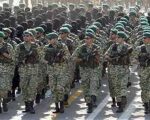HII’s Ingalls Shipbuilding division has authenticated the keel of the future USS Thad Cochran (DDG 135), marking a significant milestone in the construction of one of the U.S. Navy’s next-generation Arleigh Burke-class Flight III guided-missile destroyers. The ceremony underscores continued momentum in delivering advanced surface combatants equipped with cutting-edge sensor and weapon systems to meet evolving maritime threats.
Keel Authentication Ceremony at Ingalls Shipyard
The keel authentication for DDG 135 took place at Huntington Ingalls Industries’ (HII) Pascagoula shipyard in Mississippi on May 23, 2024. The event was attended by U.S. Navy officials and shipbuilders and included ceremonial welding of initials into the ship’s steel structure by sponsors Kay Webber Cochran and Susan Cochran Roberts—widow and daughter of the late Senator Thad Cochran, respectively.
While modern naval construction employs modular techniques that make traditional keel-laying symbolic rather than structural, this ritual remains an important tradition representing the formal recognition of a ship’s beginning. The ceremony also reflects progress toward meeting delivery timelines for critical surface combatant capabilities.
Flight III Configuration: Enhanced Sensor and Combat Capabilities
DDG 135 is part of the Flight III variant of Arleigh Burke-class destroyers—a major upgrade over previous iterations (Flights I/II/IIA). The most notable enhancement is integration of Raytheon’s AN/SPY-6(V)1 Air and Missile Defense Radar (AMDR), offering significantly improved sensitivity and discrimination over legacy SPY-1D(V) radars.
Flight III ships also feature:
- Aegis Baseline 10 combat system software with improved data fusion and engagement coordination
- Upgraded electrical power generation to support high-energy sensors
- Enhanced cooling systems to accommodate increased thermal loads
- Expanded command-and-control spaces for integrated air/missile defense operations
This configuration enables simultaneous detection and tracking of ballistic missiles, cruise missiles, aircraft, and surface targets—providing a cornerstone capability for distributed maritime operations (DMO) and Integrated Air and Missile Defense (IAMD).
Thad Cochran’s Legacy in Naval Procurement
The vessel is named after Senator William Thad Cochran (1937–2019), who served Mississippi in Congress for over four decades. As chairman or ranking member on key appropriations committees—including Defense Appropriations—Cochran played a pivotal role in securing funding for naval shipbuilding programs such as the Arleigh Burke class.
Naming DDG 135 after him honors not only his legislative contributions but also his advocacy for maintaining robust industrial capacity at Gulf Coast shipyards like Ingalls. His influence helped sustain long-term procurement stability critical to multi-year destroyer contracts.
Status Within Multi-Year Procurement Framework
The future USS Thad Cochran is one of several destroyers being built under a multiyear procurement contract awarded to HII Ingalls Shipbuilding as part of FY2018–FY2022 block buys. These contracts aim to reduce unit costs via economic order quantity purchases while ensuring production continuity across both Ingalls Shipbuilding and General Dynamics Bath Iron Works—the two primary builders of Arleigh Burke-class ships.
As of mid-2024:
- Ingalls has delivered more than 30 Arleigh Burkes since program inception in the late 1980s
- The yard is currently building multiple Flight III hulls including DDGs 128–136
- The first operational Flight III unit—USS Jack H. Lucas (DDG 125)—was commissioned in October 2023
Strategic Role Within Future Surface Fleet Architecture
The Flight III variant represents a bridge between legacy large surface combatants like Ticonderoga-class cruisers—which are being phased out—and future platforms such as DDG(X). With its scalable radar architecture and upgraded C4ISR backbone, DDG 135 will be capable of operating autonomously or as part of carrier strike groups or distributed task forces.
This aligns with U.S. Navy priorities under Distributed Maritime Operations doctrine by providing forward-deployed lethality with enhanced situational awareness through sensor fusion across domains. Moreover, SPY-6 integration ensures interoperability with other missile defense assets including SM-3/SM-6 interceptors via Cooperative Engagement Capability (CEC) links.
Conclusion: Industrial Momentum Meets Strategic Need
The keel authentication ceremony for DDG 135 reaffirms both industrial readiness at HII’s Pascagoula facility and strategic alignment with evolving naval warfare demands. As peer adversaries field increasingly sophisticated anti-access/area-denial capabilities—including hypersonic threats—the need for survivable multi-mission platforms like Flight III destroyers becomes more acute.
With delivery expected later this decade, USS Thad Cochran will join a growing cadre of ships designed not only to defend carrier groups but also to operate independently across contested seas—projecting power while defending allies under an integrated missile defense umbrella.









